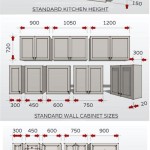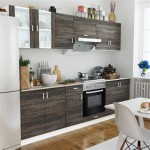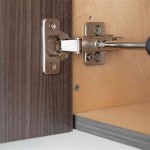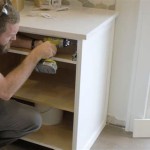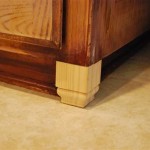Is It Hard to Remove Kitchen Cabinets?
Removing kitchen cabinets can seem like a daunting task, especially for those tackling a DIY kitchen renovation. While the process isn't inherently complex, it does require careful planning, the right tools, and a methodical approach. The difficulty level depends largely on several factors, including the cabinet type, construction, and the desired outcome. This article will explore the process involved in removing kitchen cabinets and highlight the factors that influence the overall difficulty.
Cabinet Construction and Attachment Methods
One of the primary factors influencing removal difficulty is how the cabinets are constructed and attached. Frameless cabinets, also known as European-style cabinets, are typically easier to remove than framed cabinets. This is due to their simpler box construction and often lighter overall weight. Framed cabinets, on the other hand, have a face frame attached to the front of the cabinet box, adding complexity and often requiring extra steps for dismantling. Understanding the specific cabinet construction is crucial for determining the appropriate removal method and the tools required.
The method of attachment also plays a significant role. Cabinets might be screwed directly into the wall studs, attached using mounting rails, or glued and nailed in place. Screwed cabinets are generally the easiest to remove, as simply unscrewing them from the wall is sufficient. Cabinets attached with mounting rails might require removing trim pieces to access the screws or clips. Glued and nailed cabinets present the most significant challenge, often requiring careful prying to avoid damaging the surrounding walls.
Dealing with Plumbing and Electrical Connections
Kitchen cabinets often house plumbing and electrical connections, particularly those above or below sinks, cooktops, and built-in ovens. These connections need to be safely disconnected before cabinet removal can commence. For plumbing, this involves shutting off the water supply and carefully detaching pipes connected to sinks, dishwashers, or garbage disposals. Electrical connections, such as wiring for under-cabinet lighting or range hoods, must be disconnected at the circuit breaker before removal.
If unsure about handling plumbing or electrical disconnections, seeking professional assistance is highly recommended. Improperly handling these connections can lead to water damage, electrical hazards, and potential code violations. Planning for these disconnections and ensuring all necessary precautions are taken is crucial for a safe and successful cabinet removal process.
Tools and Safety Precautions
Having the correct tools makes the cabinet removal process considerably smoother and safer. Essential tools typically include a drill or screwdriver, a pry bar, a utility knife, safety glasses, work gloves, and possibly a reciprocating saw for cutting through nails or adhesive. A stud finder is also beneficial for locating wall studs and avoiding accidental damage during removal. Proper safety precautions, such as wearing eye protection and gloves, are essential to minimize the risk of injury.
Removing countertops often precedes cabinet removal, especially for integrated designs. This typically involves disconnecting sinks and cooktops and carefully separating the countertop from the cabinets. Depending on the countertop material, specialized tools like a circular saw with a diamond blade might be necessary. Disposing of old cabinets and countertops requires considering local regulations and potential recycling options. Renting a dumpster or arranging for bulk waste pickup is often necessary for efficient disposal.
Potential Challenges and Solutions
Several challenges can arise during cabinet removal. One common issue is encountering stripped screws or stubborn nails. Penetrating oil can help loosen rusted or stubborn fasteners. Another challenge is dealing with cabinets that have been glued in place. Careful prying and the use of a putty knife can help separate glued cabinets without causing excessive damage to the walls. In extreme cases, a reciprocating saw might be needed to cut through the adhesive.
Damage to surrounding walls is another potential issue, especially when dealing with glued or nailed cabinets. Shimming the pry bar with scrap wood can help distribute pressure and minimize wall damage. Patching and repairing minor wall damage after cabinet removal is often necessary and should be factored into the project timeline. Finally, cabinets can be heavy and awkward to maneuver, so having an extra set of hands for lifting and carrying is highly recommended.
Preparing the Space
Before starting the removal process, clear the area around the cabinets of all items, including appliances, dishes, and other kitchenware. This provides ample working space and reduces the risk of damage to belongings. Covering the floor with drop cloths or cardboard protects the flooring from scratches and debris. Planning a clear path for removing the cabinets from the kitchen is also crucial, especially for larger or heavier units. This might involve removing doors or windows temporarily.
Careful planning and preparation are key to a successful cabinet removal. Assessing the cabinet construction, attachment methods, and any existing plumbing or electrical connections allows for a more informed approach. Gathering the right tools and taking appropriate safety precautions are essential for a smooth and injury-free process. By understanding the potential challenges and implementing appropriate solutions, homeowners can successfully tackle cabinet removal as part of their kitchen renovation projects.

How To Take Down Kitchen Cabinets Rehang One Young House Love

How Do I Remove My Kitchen Cabinets Rta Wood

How To Take Down Kitchen Cabinets Rehang One Young House Love

How To Take Down Kitchen Cabinets Rehang One Young House Love

Kitchen Removing Base Cabinet Countertops Backsplash

How To Remove Kitchen Cabinets Without Damaging Walls A Step By Guide

How To Remove Kitchen Cabinets

How To Remove Cabinets Open Up Kitchen Plus Hanging Helpful Diy Remodel Tips

How To Install Kitchen Cabinets And Remove Them Remodel Pt 1 Crafted Work

3 Ways To Remove Kitchen Cabinets Wikihow
Related Posts

